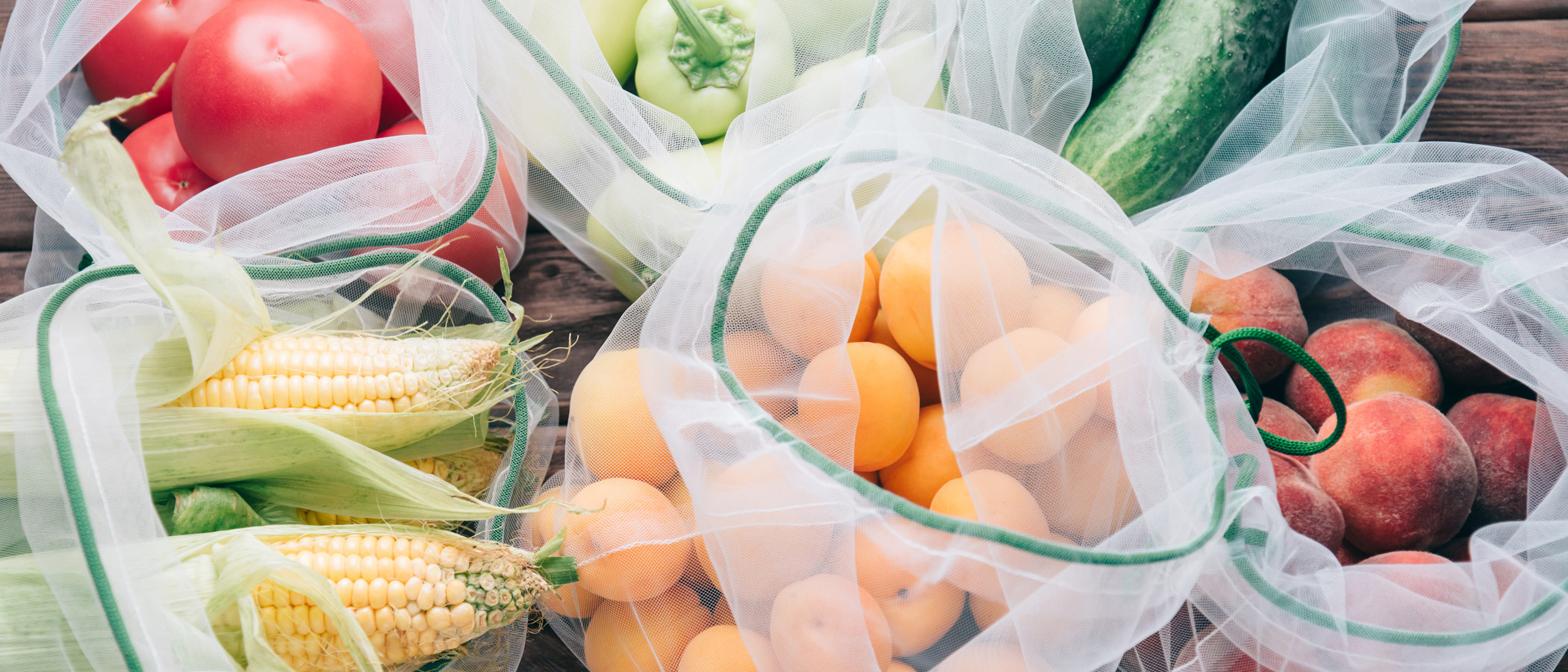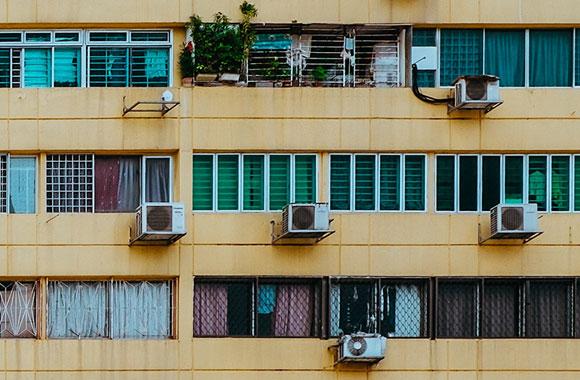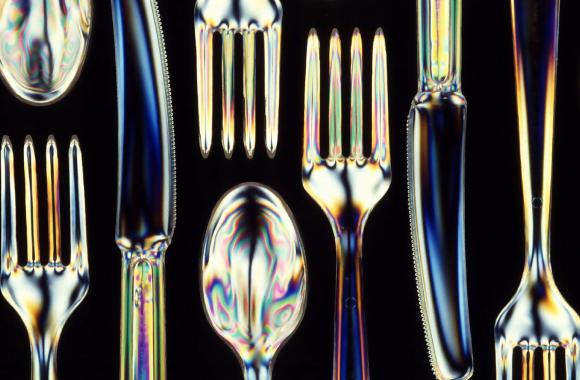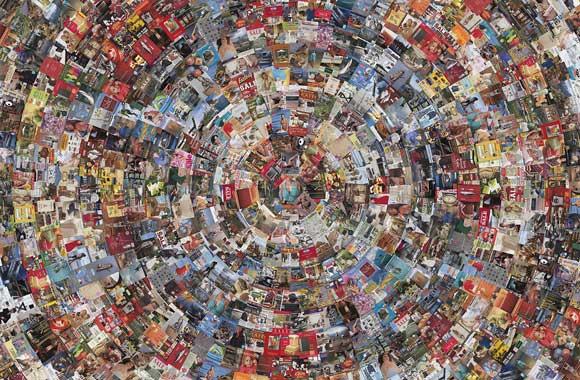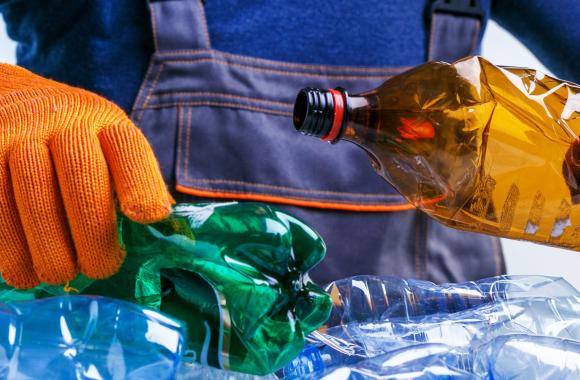Reduced Plastics
Plastic production has grown tremendously over the last century, mainly for short-term use. Reducing the amount of plastic used in nondurable goods can achieve significant reductions in both greenhouse gas emissions and plastic waste.
Reduced/Sequestered
2020–2050
Impact
Reducing plastic production would avoid 123.61–166.35 million metric tons of plastic produced by 2050. This would avoid 3.76–5.40 gigatons of carbon dioxide emissions. It also would avoid a significant amount of waste, further reducing emissions from dumpsites and the environment (not included here). Financials are not projected because the stakeholders experiencing the financial impact are not the same as the ones that would implement the solution.
Introduction
Global plastic production has increased astronomically over the past few decades, reaching 368 million metric tons in 2019. Not only are plastics petroleum-based, consuming approximately 6 percent of global oil today as a raw material, but their production is energy intensive, releasing more than 390 million metric tons of carbon dioxide equivalent—4 percent of global greenhouse gas emissions—in 2015.
Application of plastic spans all areas of life and society. More than 60 percent of all use is for short-term applications such as packaging and household goods. These applications produce prolific plastic waste that, when released into the environment, can harm wildlife, society, and our economy. Due to these issues, many stakeholders are calling on corporations to reduce plastic usage in packaging. There are already many country-level and corporate-level commitments to eliminate plastics usage.
Project Drawdown’s Reduced Plastics solution involves reducing plastic production by eliminating unnecessary plastic and shifting to reuse models. According to some reports, between 30 to 60 percent of plastics in packaging can be reduced.
Methodology
Total Addressable Market
We defined the total addressable market for the Reduced Plastic solution as million metric tons of nondurable plastic produced. Nondurable plastic represents around 64 percent of all plastic produced. It includes packaging and household goods with an average lifespan of three years. Plastic reduction interventions are not applicable for the remaining 36 percent of durable plastics because their average lifespan is around 50 years, so the greenhouse gas emissions related to their production are significantly lower than for nondurable plastic. We measured the total addressable market for plastic by averaging five sets of forecasted plastics adoption data from 2020 to 2050.
Adoption Scenarios
We based Reduced Plastic solution models on five custom adoption scenarios we developed based on various analyses of plastic reduction potential.
We assessed impacts of increased adoption of the Reduced Plastic solution from 2020 to 2050 by comparing two growth scenarios with a reference scenario in which the market share was fixed at current levels.
-
Scenario 1: Plastic production is reduced by 123.61 million metric tons (22 percent of the total addressable market).
-
Scenario 2: Plastic production is reduced by 166.35 million metric tons (30 percent of the total addressable market).
Emissions Model
We based average direct emissions for plastic production on 27 data points from eight sources. The solution is based on reducing nondurable plastics by eliminating overpackaging, boosting reuse at the producer and consumer level, and offering new delivery models (deposit schemes, refill stations). The greenhouse gas emissions associated with energy spending on the application of new delivery models are not accounted for in this analysis because they are not within the solution’s boundary (e.g., energy spending on packaging washing and door-to-door product distribution are assumed to be accounted for in the Electricity and Transportation sectors). Because no plastics will be produced under scenarios, we set the direct emissions per solution at 0.
Financial Model
We assume that any costs for implementing the Reduced Plastics solution are borne at the government, producer, and consumer levels. We did not calculate the financials because multiple agencies are involved in implementing the solution and distribution of costs would be too complicated.
Integration
The Reduced Plastics solution is part of the integrated plastic system and is the top priority in the plastic market transformation. The plastic remaining after reduction is available for allocation to alternative materials/ replacement solutions (Recycled Plastics, Bioplastics), and the climate impacts of those solutions are quantified and explained in the respective solutions models and technical reports. We assume that 10 percent of plastic demand must be met by virgin plastics due to technological constraints and quality needs. The remaining 90 percent of the reduced plastic total addressable market is allocated to other solutions in the following order: alternative materials such as paper and coated paper (not yet modeled), Recycled Plastics, Bioplastics.
Results
Scenario 1 reduces carbon dioxide equivalent emissions by 3.76 gigatons by 2050. Scenario 2 reduces carbon dioxide equivalent emissions by 5.40 gigatons by 2050.
Discussion
The Reduced Plastic solution in 2050 has an annual mitigation potential of 0.4–0.7 gigatons of carbon dioxide equivalent emissions. Our results are lower than those of Becqué and Sharp (2020), who estimated an annual reduction of 2 gigatons of carbon dioxide equivalent in 2050 under modeled scenarios in comparison to business-as-usual prognostications. Becqué and Sharp (2020) present a possible outcome of completely phasing out single-use plastics from packaging by 2050, so their emissions reduction is higher. Our scenarios are based on meta-analyses of sources that assume different degrees of reducing and substituting plastics packaging.
Reduced plastic production has many other benefits, including reduced waste production and reduction of socioeconomic and environmental issues associated with plastic waste. Reduction is critical for low-income countries where waste management infrastructure is lacking. In these regions, most plastic waste is informally disposed of, leading to significant release into the environment. Reduced Plastic can be achieved through cooperation with consumers, producers, and governments that can incentivize reduction through policy (e.g., extended producer responsibility schemes).
References
Becqué, R., & Sharp, S. (2020). Phasing out plastics. The packaging sector. ODI.
What You Can Do
Where possible, avoid single-use plastic items.
Reuse plastic and glass food containers rather than purchasing new ones for storing leftovers.
- Expand your knowledge by exploring another Drawdown solution.

